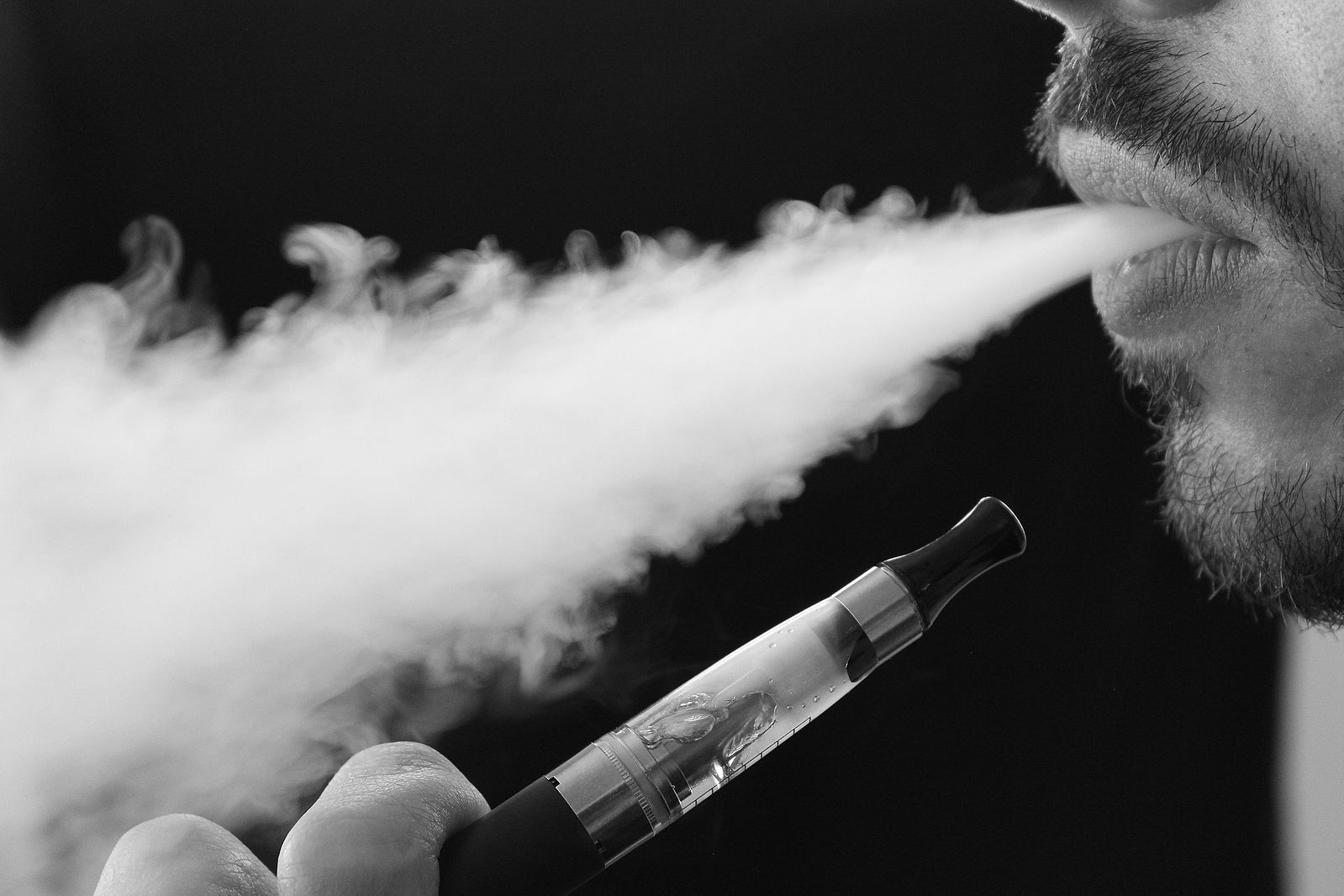A lung disease linked to vaping has killed 48 people and hospitalized over 2,000 others as of December this year.
E-cigarettes use a battery to vaporize a liquid cartridge containing nicotine or THC, which avoids the tar buildup that occurs commonly when smoking cigarettes. It still gives users an addictive nicotine rush comparable to what they would receive if they were smoking a cigarette.
The problem with defending the safety of e-cigarettes is that so little is known about their effects. E-cigarettes have only been mass produced since the early 2000s as an alternative to cigarettes. There has not been much time to observe the effects of vaping. Even with limited research, the Centers for Disease Control and Prevention (CDC) found that the vapor does contain harmful substances like carcinogens and can even contain heavy metals.
Since this summer, thousands of people were hospitalized across America because of lung issues.
Eighteen-year-old Adam Hergenreder, who had been vaping for two years, told The Washington Post, “I started violently throwing up, non-stop, for three days, as well as experiencing difficulty breathing. [His parents] thought it was the flu.”
Many cases like this have been misdiagnosed as other lung diseases like pneumonia or even the flu. As Hergenreder’s health worsened, he was rushed to the hospital where the doctors recognized his symptoms as the vaping illness that hospitalized many others.
People who were affected had been in good health prior to this disease, and the only link that the CDC and Food and Drug Administration (FDA) have found between all patients with this disease has been vaping. Symptoms have included chest pain, coughing and even death.
“What we’ve seen in the lungs affected by vaping, especially the ones of the kids in the hospital, is a lot of inflammation,” said UCSF pediatric pulmonologist, Dr. Marilynn Chan. “When they’ve done biopsies of the lungs, they see an increase of the markers for inflammation. The lung tissues themselves don’t look very normal. The lung just kind of looks sick.”
The Mayo Clinic reported biopsies of lungs that had been affected by vaping that looked like they had been exposed to chemical burns similar to lungs affected by noxious chemical fumes.
Dubbed “EVALI” for “e-cigarette or vaping product use associated lung injury,” this illness has affected over 2,000 people so far, according to the CDC. Most of these numbers are reported by doctors who have treated patients in the hospital, so it is possible that many others have been affected by EVALI.
The CDC believes that the cause of EVALI has something to do with the inhalation of vitamin E acetate, as the 29 samples from patients with EVALI that the CDC collected all contain vitamin E acetate. The chemical is used as an additive in vaping products. When consumed, vitamin E acetate is harmless, but when inhaled, it can cause respiratory problems due to its greasy properties. Lungs are not meant to inhale oil, and scientists in the New York health department and the CDC posited that coating the lungs with inhaled vitamin E acetate is detrimental.
The FDA has still not confirmed these findings but are conducting their own investigations with patients who have EVALI, and have found that aside from vaping, there is not a unifying factor that all patients share. The FDA found that the majority of patients’ tests contained tetrahydrocannabinol (THC), which can be found in cannabis oil e-cigarette cartridges.
A former Juul executive has accused the company of putting a million contaminated Juul pods on the market, which scientists also think may be associated with the EVALI outbreaks. However, the contaminant was not disclosed in this allegation. The FDA also thinks that modifying products or buying products that have additives could possibly cause lung problems. The CDC and the FDA are still investigating potential causes of EVALI.
The cases of EVALI have also revealed the prevalent use of e-cigarettes among youth: the median age of someone affected by EVALI is 24, and the range of ages is from 13 to 75. In California, the legal age to purchase tobacco and e-cigarette products is 21.
The youngest person to have died from this illness was a seventeen-year-old boy from New York and there have been hundreds of other teens who have been hospitalized because of EVALI.
Nearly 30 percent of high school students reported vaping in 2019. Researchers from Stanford found that companies like Juul— which was founded in 2015— appealed to youth by promoting their products through social media influencers, flavored vape pods and ads with pop culture references. Juul ads also neglected to warn users about the dangers of vaping and claimed to be a safer alternative to smoking cigarettes.
At UCSF, researchers are working on studying the effects of vaping with adolescents in clinics who have not been hospitalized with EVALI in order to understand how severely vaping can affect the lungs at different stages.
“After vaping for a couple of months, do your lungs look okay compared to someone who has vaping for six months, or do your lungs not look okay already at two months, and then progressively get worse?” said Chan, who listed questions she hopes will be answered through more research. “Are your lungs actually fine although you feel fine, or is it something that, a couple decades down the line, you’re going to end up feeling like, ‘Oh, I actually can’t breathe as well as someone who didn’t vape for such a long time?’”
There is a lot that is still unknown about EVALI and the consequences of vaping. People who vape may experience the effects of vaping but not severely enough to be hospitalized. As of now, the CDC advises people to stay away from e-cigarette products that contain vitamin E acetate and THC.






